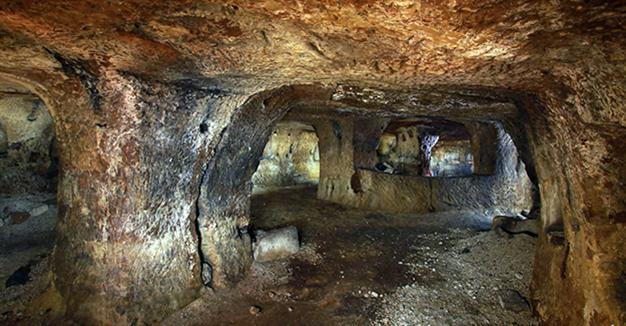“We will see what we find in the next stages. The history of this place is very old. If we can find evidence from the Hittite era, we will make a great contribution to Nevşehir’s history.” – Archaeologist Semih İstanbulluoğl

PHOTO: hurriyetdailynews.com
NEVŞEHIR, TURKEY – a newly discovered monastery is proving to be a significant discovery for Turkish historians and archaeologists. In 2014, archaeologists discovered a huge network of caves – an underground city – in the Central Anatolian province of Nevşehir. The Turkish Development Administration, or TOKİ, were working on an urban transformation project at the time. The administration were conducting excavation and cleaning works on the 400,000 square meter area surrounding Nevşehir castle, in the city center, that surrounds eleven neighborhoods. It’s a third-degree archaeological area.
At the beginning of this year, a church was discovered in the underground city, covered in ancient, well-preserved frescoes of the ascension of Jesus Christ to heaven and other important objects and stories to the Orthodox church. The frescoes also include depictions of the apostles, the saints, and the prophets Moses and Elijah. Archaeological excavations have continued, and archaeologists have discovered a monastery carved into the underground rock. It dates back hundred of years to the fifth or sixth centuries in Turkey.
The find has caused a stir of excitement in the Turkish archaeological and academic communities. Historians both Turkish and foreign have been drawn to the region. Many believe that Nevşehir’s archaeology that’s being uncovered will produce many discoveries that will tell us important things about the history of humanity.
During the fifth and sixth centuries, the area of Turkey, or Anatolia, was ruled by the Eastern Roman Empire: Byzantium. It ruled the area of Turkey until the Late Middle Ages until it fell to the Ottomans in the 1453. The 4th to 6th centuries were an especially important period in history, when the Greek East and the Latin West of the Roman Empire divided. Constantinope and the area of Turkey were based around Greek culture, and so it produced what we know today as Orthodox Christianity.
The site at Nevşehir dates back to this monumental period in the Roman Empire’s history. This discovery will give us an important window to the past, a picture of what was important to early Greek Orthodox Christians, and just how influential Orthodoxy was in Byzantine Turkey.
The Nevşehir authorities are planning on turning the site into a museum open to visits with the next year. So far, they’re conducting the first cleaning of the monastery, and it’s revealing some important finds, both in frescoes, architecture, and in artifacts. Sensitive cleaning routines have been set up, and as archaeologists find artifacts, they’re carefully cataloging them and sending them in to the local historical museum.
So far, the site has yielded evidence of a complex, advanced Byzantine society, including oil factories, water ways, common areas, another underground church, and even several horse stables that were probably used by ancient armies.
The find is being left in the very capable hands of Turkish academics, and several teams are working to preserve and uncover the history at Nevşehir. A few documentary teams have even moved in, expecting a story.
“When works first started in the field with TOKİ, nobody knew that there was an underground city. When this place is cleaned, we will open all of the findings to tourism. We are very excited about the works. In further stages, the most famous restorers of Turkey and the world will work here. Some parts of these places will open to tourism next year. We have brought the entire area under protection. As cleaning work is done, it will be partially opened.” – Nevşehir Mayor Hasan Ünver

